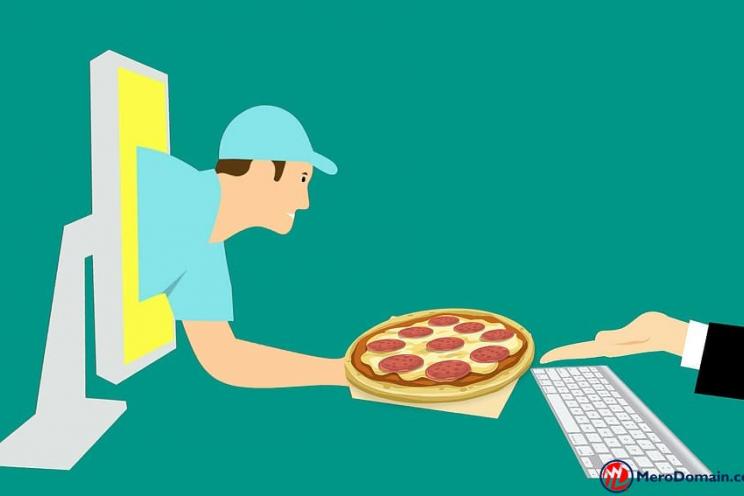
What you need to know about Kitchen and food safety tips at your restaurant
The last thing we want in our ordered platters at restaurants is a fly or a hidden hair mixed in our food.
This can raise a complaint or two, customers might run to the manager on duty and explain the off putting situation.
As repellent as it might be, trust me, it’s not the only thing to worry about or not the most thing to worry about.
A hair or a fly are indeed gross and drive customers away but they don’t cause harmful physical diseases.
What you should worry about are foodborne diseases like E-coli, Salmonella and norovirus that threat people’s health.
The centre for disease control and prevention CDC estimates that there are 48 million cases of foodborne illness every year in the US.
In Lebanon, statistics of the ministry of health report 96 cases of food poisoning annually while local health experts report over 100 cases daily as per hospitals reports, the World Youth Alliance explains.
Food safety at restaurants begins in kitchens, commercial ones of course.
Remember as a restaurateur, you are responsible for your customer’s health and you have to ensure the food safety delivered to them.
The US food and drug administration FDA sets the guidelines for restaurants for food preparation and storage whether a small or large business.
These guidelines treat every aspect of the kitchen from the staff to food handling and storage, water and waste.
So, what are the tips to follow for food safety?
Keep preparation stations clean
Make sure you have a designated station for food preparation where you keep your dishes and flatware that you constantly sanitize and clean.
Preparation area is often neglected in the kitchen and it can be a reason for cross contamination.
Sanitize surfaces
- Sanitize dining tables and surfaces where you prepare food.
- Use a clean cloth
- Use an approved disinfectant
- Leave the disinfectant on the surfaces for the designated time depending on the product that you’re using.
It goes without saying that you should clean your fresh produce with clean water.
Make sure you follow this cleaning checklist
During the day
- Wash cutting boards, countertops and prep table surfaces
- Wash slicers, grinders, mixers, microwaves, coffee makers and other prep equipment
- Wipe down and disinfect prep station surfaces after preparing food
- Brush off griddles, grills and other cooktops after making meat, poultry or fish
- Empty drip trays from grills, griddles and other cooking equipment
- Clean any major spills or splatters off surfaces, floors or equipment
- Place dirty kitchen rags and linens in the laundry (separately from uniforms)
- Place dirty aprons and coats in the laundry (separately from kitchen rags and linens)
- Empty garbage cans frequently
- Refill empty paper towel rolls or soap dispensers.
After the day is over
- Sweep or vacuum the floors of your kitchen, pantries and walk-in fridges
- Mop the floors (use strong degreaser to scrub major grease spills)
- Clean floor mats
- Clean the washing stations and sinks
- Wipe spills and splatters off the walls
- Wash and sanitize all countertops and prep area surfaces
- Clean beverage dispensers and gun heads
- Clean and disinfect griddles, grills, burners and other cooktops
- Change foil linings on all ovens, grills and cooking equipment
- Clean deep fryers
- Run a load of kitchen rags and linens in the washing machine (separately from uniforms)
- Run a load of aprons and coats in the washing machine (separately from kitchen linens)
Don’t ignore the buffet area
Buffets are a big danger and in many times they are left neglected and they can cause foodborne illnesses.
Make sure you keep recommended temperatures for cold and hot food temperatures.
Discard food that wasn’t consumed within two hours.
For this purpose, have someone watch the food stations and buffets.
Food preparation and storage temperature
Keep food below 5 C or higher than 57 C.
Temperatures in between are a source of bacterial growth. They are the perfect environment for harmful bacteria.
For thawing food, you have to plan ahead by moving frozen food from freezers to the fridge 24 hours ahead of usage time for every 5 pounds.
You can use the water method but make sure the food is in leak proof package and it gets cooked immediately after thawing.
Same thing for the microwave thawing as per the food safety and inspection service.
Use old food first
If you’re running your kitchen at home, this is an easy step but in restaurants and commercial kitchens, it becomes hectic.
Label your food clearly with exact production and expiration dates.
Place older food or supplies in front. In this case, a kitchen management system is essential to ensure smooth operations and enhanced food preparation process from ordering the raw materials to the prepared meals.
You can find interesting tips about kitchen management system in this blog.
Know your storage requirements
Dry, cold and hot food should be stored differently according to R.W. Smith in guidelines about food storage guide.
Some of the guidelines:
Dry Food:
6 inches above floor
Room temperature between 10 C and 20 C.
Cold food:
Temperature 3 C to 4 C.
Refrigerate within 2 hours.
Keep food in well-sealed food containers.
Hot food:
Begin meal services within 30 minutes of putting food on display.
Food should be cooked to a minimum temperature of 70 C.
Place utensils used in the food to prevent contamination.
Ensure the hygiene of the staff
Employees should wear gloves
They should follow the proper handwashing steps
They should be trained on proper hygiene measured
Pay attention to food allergens
- Don’t use the same utensils you use for allergen free meal with meals containing food allergens
- Always mention food allergens in your meals to your customers
- Ensure staff is aware of main food allergens such as nuts, milk, fish...
Additional measures to take into consideration especially during Covid19.
Luckily, no evidence is shown concerning Covid19 and transmission through food but restaurateurs should still follow preventive procedures.
- Send staff home immediately if showing any symptoms
- Make employees wear masks and gloves and dispose them every four hours
- Make handwashing mandatory when they come in and leave, before and after each preparation, after handling money, after touching shared surfaces, before and after their lunch or smoke breaks and after bathroom breaks
- Limit food handling by limiting number of people handling food
- Follow hygiene procedures with your packages and your drivers
Even when the pandemic is over, these safety and hygiene tips cannot be ignored. Follow them to keep your customer service at its best.





